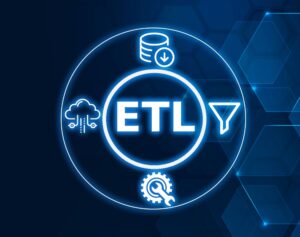
Shutterstock
In its goal to create a fully managed end-to-end data movement platform, data integration company Fivetran has acquired Census, a startup specializing in Reverse extract, transform, and load (ETL), data activation, and operational analytics.
The acquisition strengthens Fivetran’s role in helping enterprises move data from various sources into cloud databases while advancing its broader vision of making access to data as simple, secure, and reliable as possible.
Fivetran automates the transfer of data from source systems to data warehouses, while Census enables that data to flow back into business applications. The acquisition completes Fivetran’s data movement loop, enabling true end-to-end data flow across an organization.
The terms of the deal have been disclosed. The last valuation for Census was $630 million, when in 2022, it raised $60M in a series B funding round. The company had raised a total of $80.3 million in venture funding at that time.
In its early years, Fivetran focused on automating pipelines to move raw data from source systems into warehouses with zero maintenance. Over time, the company expanded its scope, introducing additional deployment models, sources, and destinations.
 Despite these advancements, Fivetran lacked native support for Reverse ETL, which meant customers could centralize and transform their data but had no built-in way to push it back into business applications where it could be used. Acquiring Census fills that gap, enabling customers to activate their data directly within operational tools and complete the full data movement cycle.
Despite these advancements, Fivetran lacked native support for Reverse ETL, which meant customers could centralize and transform their data but had no built-in way to push it back into business applications where it could be used. Acquiring Census fills that gap, enabling customers to activate their data directly within operational tools and complete the full data movement cycle.
“For years, our most strategic customers told us they also want to action their data in real-time with Fivetran, not just centralize it in a warehouse. With Census, we’re delivering on that need,” said George Fraser, CEO of Fivetran. Our joint customers can now move trusted, modeled data into every part of their stack, from source systems to cloud platforms and back into operational tools, all on a single, fully managed platform. This is a foundational step in helping enterprises make real-time, AI-powered decisions at scale.”
Jabes explained that his vision from the beginning was to create a platform where nontechnical users could construct queries in a way that made sense to them and directly access the data they needed, eliminating the need for an intermediary.
Founded in 2018, Census is widely credited with pioneering the Reverse ETL category. While Traditional ETL tools move data into data warehouses for analysis, Reverse ETL does the opposite by moving the data back into operational tools like Salesforce, HubSpot, or Zendesk.
“At Census, we’ve always believed that data teams should be the driving force behind business growth—not just builders of dashboards,” said Boris Jabes, CEO and co-founder of Census. “To harness the power of AI and automation, companies need trusted, well-modeled data available in every application their teams rely on, in real-time. Our Reverse ETL service has been pivotal in making that a reality for our customers.”
Other tools in the market offer Reverse ETL, but Fivetran argues that many require extensive setup or ongoing adjustments to remain reliable at scale. This is where Census stood out.
According to Fivetran, Census not only aligns with its core principles of simplicity and automation but also shares a deep-rooted history with the company. The two have maintained a longstanding strategic alignment, which includes early-stage collaboration, overlapping customer bases, and executive-level trust.
Fivetran claims that its integration with Census helps joint customer Canva activate real-time customer insights without custom code or ongoing maintenance. Fivetran ingests and models Canva’s data, while Census helps them activate it. The result, according to Fivetran, is a 33% increase in email open rates, a 2.5% lift in engagement, over $200,000 saved annually, and the ability to create new audiences in under five minutes.
Fivetran’s acquisition of Census marks its third major purchase, following its 2021 acquisitions of HVR and Teleport Data. HVR strengthened Fivetran’s platform with enterprise-grade change data capture, while Teleport Data formed the foundation of Fivetran Teleport Sync, a high-speed database replication method.
 Beyond acquisitions, Fivetran has reached key milestones, including surpassing $300 million in annual recurring revenue. The company introduced Hybrid Deployment, allowing data pipelines to run seamlessly across private cloud, on-premises, and public cloud on a unified platform.
Beyond acquisitions, Fivetran has reached key milestones, including surpassing $300 million in annual recurring revenue. The company introduced Hybrid Deployment, allowing data pipelines to run seamlessly across private cloud, on-premises, and public cloud on a unified platform.
It also expanded its Managed Data Lake Service, integrating with cloud storage solutions like Amazon S3 Azure Data Lake Storage, and Google Cloud Storage to support AI-ready data lakes. To support its next phase of growth, Fivetran has strengthened its leadership team with key appointments across various departments.
Related Items
Avoid the Hidden Challenges of Data Migration
The Active Data Architecture Era Is Here, Dresner Says
What We’ve Learned from Over Two Decades of Data Virtualization



